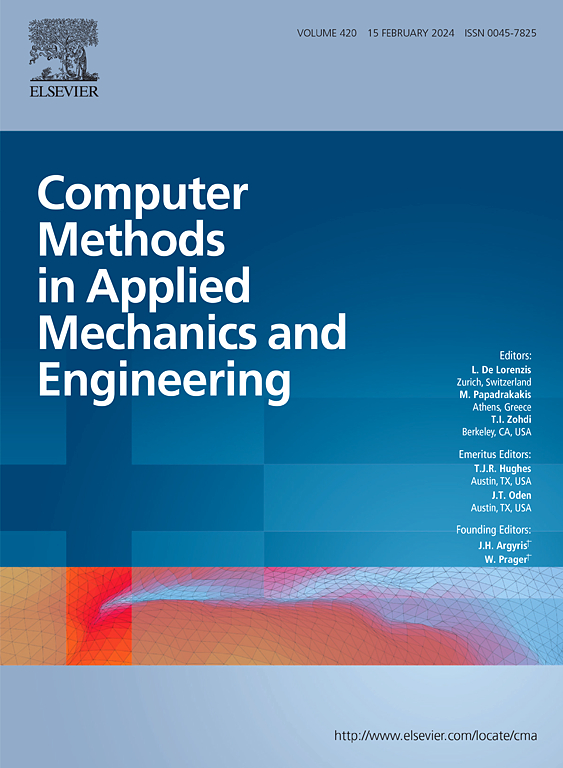具有精确可编程非线性力学响应的结构的拓扑优化反设计
IF 7.3
1区 工程技术
Q1 ENGINEERING, MULTIDISCIPLINARY
Computer Methods in Applied Mechanics and Engineering
Pub Date : 2025-07-28
DOI:10.1016/j.cma.2025.118243
引用次数: 0
摘要
具有可编程非线性响应的结构在医疗支架、软机器人、可穿戴和柔性电子设备等设计中具有广阔的应用前景。然而,就结构逆设计而言,从目标特性到结构构型的非线性力学响应的精确调整是异常困难的。针对具有目标非线性力学响应的结构的定制化设计,提出了一种基于拓扑优化的逆设计方法。该方法引入了切线刚度约束,显著提高了非线性力学响应的可编程精度。为了跟踪结构的非线性力学行为,采用改进的广义位移控制方法求解非线性有限元方程。采用应变能插值方法解决了非线性拓扑优化过程中的数值不稳定性问题。此外,采用数值拉伸和压缩试验模型以及周期边界条件来表征微观结构的宏观非线性力学行为。给出了宏观组织和微观组织在硬化、软化、恒力和双稳力学行为方面的数值例子。结果表明,该方法具有较好的鲁棒性和准确性,在实现可编程非线性力学响应方面具有广泛的适用性。本文章由计算机程序翻译,如有差异,请以英文原文为准。
Inverse design of structures with accurately programmable nonlinear mechanical responses by topology optimization
Structures with programmable nonlinear responses have promising applications in the design of medical stents, soft robotics, wearable and flexible electronic devices, and so on. However, it is exceptionally difficult to precisely tune the nonlinear mechanical responses in terms of structural inverse design from target properties to configurations. This paper proposes an inverse design method based on topology optimization, which is targeted at the customized design of structures featuring target nonlinear mechanical responses. In this method, a tangent stiffness constraint is introduced, which significantly improves the programmable accuracy of nonlinear mechanical responses. To track the nonlinear mechanical behavior of structures, the modified generalized displacement control method is used to solve the nonlinear finite element equations. A strain energy interpolation scheme is employed to address numerical instability during nonlinear topology optimization. Moreover, numerical tensile and compression test models, along with periodic boundary conditions, are employed to characterize the macroscopic nonlinear mechanical behavior of microstructures. Numerical examples of macrostructures and microstructures in terms of stiffening, softening, constant force, and bistable mechanical behaviors are provided. The results indicate that the proposed method is accurate and robust, and has wide applicability in realizing programmable nonlinear mechanical responses.
求助全文
通过发布文献求助,成功后即可免费获取论文全文。
去求助
来源期刊
CiteScore
12.70
自引率
15.30%
发文量
719
审稿时长
44 days
期刊介绍:
Computer Methods in Applied Mechanics and Engineering stands as a cornerstone in the realm of computational science and engineering. With a history spanning over five decades, the journal has been a key platform for disseminating papers on advanced mathematical modeling and numerical solutions. Interdisciplinary in nature, these contributions encompass mechanics, mathematics, computer science, and various scientific disciplines. The journal welcomes a broad range of computational methods addressing the simulation, analysis, and design of complex physical problems, making it a vital resource for researchers in the field.

 求助内容:
求助内容: 应助结果提醒方式:
应助结果提醒方式:


